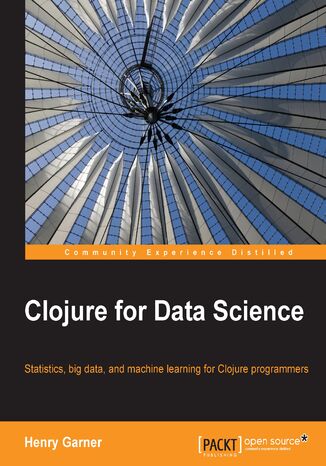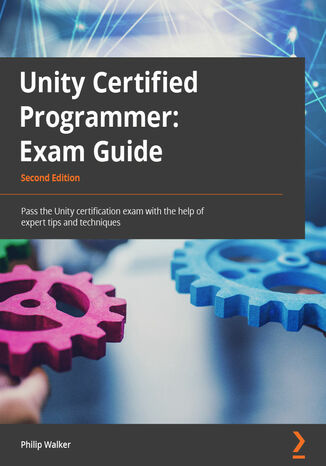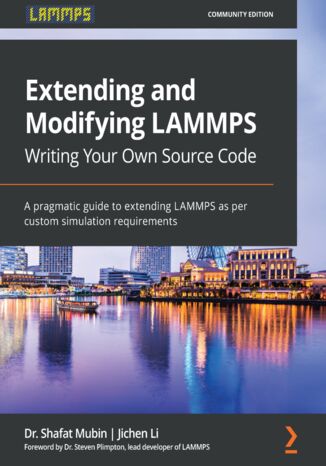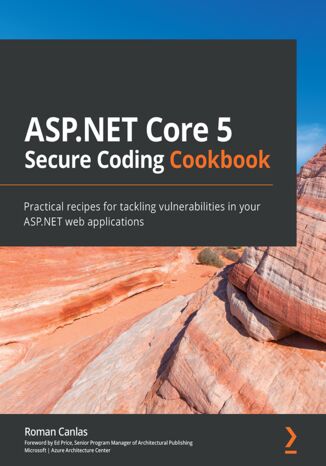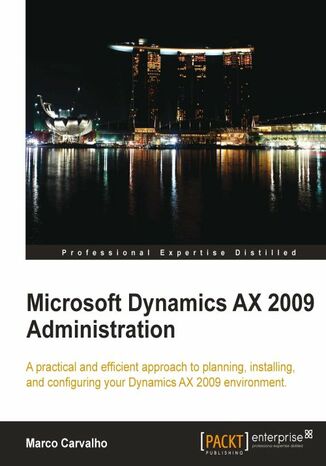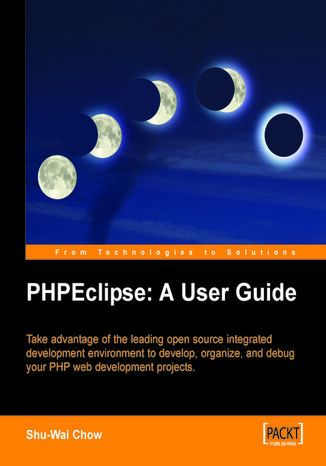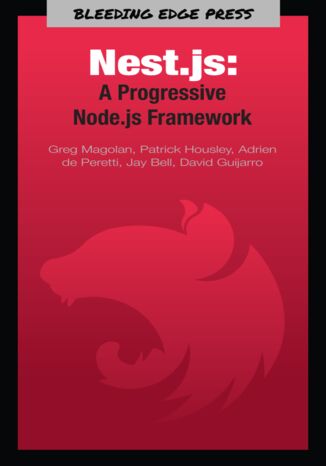Kategorie
-
- Bitcoin
- Bizneswoman
- Coaching
- Controlling
- E-biznes
- Ekonomia
- Finanse
- Giełda i inwestycje
- Kompetencje osobiste
- Komputer w biurze
- Komunikacja i negocjacje
- Mała firma
- Marketing
- Motywacja
- Multimedialne szkolenia
- Nieruchomości
- Perswazja i NLP
- Podatki
- Polityka społeczna
- Poradniki
- Prezentacje
- Przywództwo
- Public Relation
- Raporty, analizy
- Sekret
- Social Media
- Sprzedaż
- Start-up
- Twoja kariera
- Zarządzanie
- Zarządzanie projektami
- Zasoby ludzkie (HR)
-
- Architektura i wnętrza
- BHP
- Biznes i Ekonomia
- Dom i ogród
- E-Biznes
- Ekonomia i finanse
- Ezoteryka
- Finanse
- Finanse osobiste
- Firma
- Fotografia
- Informatyka
- Kadry i płace
- Kobieca
- Komputery, Excel
- Księgowość
- Kultura i literatura
- Naukowe i akademickie
- Ochrona środowiska
- Opiniotwórcze
- Oświata
- Podatki
- Podróże
- Psychologia
- Religia
- Rolnictwo
- Rynek książki i prasy
- Transport i Spedycja
- Zdrowie i uroda
-
- Aplikacje biurowe
- Bazy danych
- Bioinformatyka
- Biznes IT
- CAD/CAM
- Digital Lifestyle
- DTP
- Elektronika
- Fotografia cyfrowa
- Grafika komputerowa
- Gry
- Hacking
- Hardware
- IT w ekonomii
- Pakiety naukowe
- Podręczniki szkolne
- Podstawy komputera
- Programowanie
- Programowanie mobilne
- Serwery internetowe
- Sieci komputerowe
- Start-up
- Systemy operacyjne
- Sztuczna inteligencja
- Technologia dla dzieci
- Webmasterstwo
-
- Antologie
- Ballada
- Biografie i autobiografie
- Dla dorosłych
- Dramat
- Dzienniki, pamiętniki, listy
- Epos, epopeja
- Esej
- Fantastyka i science-fiction
- Felietony
- Fikcja
- Humor, satyra
- Inne
- Klasyczna
- Kryminał
- Literatura faktu
- Literatura piękna
- Mity i legendy
- Nobliści
- Nowele
- Obyczajowa
- Okultyzm i magia
- Opowiadania
- Pamiętniki
- Podróże
- Poemat
- Poezja
- Polityka
- Popularnonaukowa
- Powieść
- Powieść historyczna
- Proza
- Przygodowa
- Publicystyka
- Reportaż
- Romans i literatura obyczajowa
- Sensacja
- Thriller, Horror
- Wywiady i wspomnienia
-
- Archeologia
- Bibliotekoznawstwo
- Filmoznawstwo
- Filologia
- Filologia polska
- Filozofia
- Finanse i bankowość
- Geografia
- Gospodarka
- Handel. Gospodarka światowa
- Historia i archeologia
- Historia sztuki i architektury
- Kulturoznawstwo
- Lingwistyka
- Literaturoznawstwo
- Logistyka
- Matematyka
- Medycyna
- Nauki humanistyczne
- Pedagogika
- Pomoce naukowe
- Popularnonaukowa
- Pozostałe
- Psychologia
- Socjologia
- Teatrologia
- Teologia
- Teorie i nauki ekonomiczne
- Transport i spedycja
- Wychowanie fizyczne
- Zarządzanie i marketing
-
- BHP
- Historia
- Kodeks drogowy. Prawo jazdy
- Nauki prawne
- Ochrona zdrowia
- Ogólne, kompendium wiedzy
- Podręczniki akademickie
- Pozostałe
- Prawo budowlane i lokalowe
- Prawo cywilne
- Prawo finansowe
- Prawo gospodarcze
- Prawo gospodarcze i handlowe
- Prawo karne
- Prawo karne. Przestępstwa karne. Kryminologia
- Prawo międzynarodowe
- Prawo międzynarodowe i zagraniczne
- Prawo ochrony zdrowia
- Prawo oświatowe
- Prawo podatkowe
- Prawo pracy i ubezpieczeń społecznych
- Prawo publiczne, konstytucyjne i administracyjne
- Prawo rodzinne i opiekuńcze
- Prawo rolne
- Prawo socjalne, prawo pracy
- Prawo Unii Europejskiej
- Przemysł
- Rolne i ochrona środowiska
- Słowniki i encyklopedie
- Zamówienia publiczne
- Zarządzanie
-
- Afryka
- Albumy
- Ameryka Południowa
- Ameryka Środkowa i Północna
- Australia, Nowa Zelandia, Oceania
- Austria
- Azja
- Bałkany
- Bliski Wschód
- Bułgaria
- Chiny
- Chorwacja
- Czechy
- Dania
- Egipt
- Estonia
- Europa
- Francja
- Góry
- Grecja
- Hiszpania
- Holandia
- Islandia
- Litwa
- Łotwa
- Mapy, Plany miast, Atlasy
- Miniprzewodniki
- Niemcy
- Norwegia
- Podróże aktywne
- Polska
- Portugalia
- Pozostałe
- Przewodniki po hotelach i restauracjach
- Rosja
- Rumunia
- Słowacja
- Słowenia
- Szwajcaria
- Szwecja
- Świat
- Turcja
- Ukraina
- Węgry
- Wielka Brytania
- Włochy
-
- Filozofie życiowe
- Kompetencje psychospołeczne
- Komunikacja międzyludzka
- Mindfulness
- Ogólne
- Perswazja i NLP
- Psychologia akademicka
- Psychologia duszy i umysłu
- Psychologia pracy
- Relacje i związki
- Rodzicielstwo i psychologia dziecka
- Rozwiązywanie problemów
- Rozwój intelektualny
- Sekret
- Seksualność
- Uwodzenie
- Wygląd i wizerunek
- Życiowe filozofie
-
- Bitcoin
- Bizneswoman
- Coaching
- Controlling
- E-biznes
- Ekonomia
- Finanse
- Giełda i inwestycje
- Kompetencje osobiste
- Komunikacja i negocjacje
- Mała firma
- Marketing
- Motywacja
- Nieruchomości
- Perswazja i NLP
- Podatki
- Polityka społeczna
- Poradniki
- Prezentacje
- Przywództwo
- Public Relation
- Sekret
- Social Media
- Sprzedaż
- Start-up
- Twoja kariera
- Zarządzanie
- Zarządzanie projektami
- Zasoby ludzkie (HR)
-
- Antologie
- Ballada
- Biografie i autobiografie
- Dla dorosłych
- Dramat
- Dzienniki, pamiętniki, listy
- Epos, epopeja
- Esej
- Fantastyka i science-fiction
- Felietony
- Fikcja
- Humor, satyra
- Inne
- Klasyczna
- Kryminał
- Literatura faktu
- Literatura piękna
- Mity i legendy
- Nobliści
- Nowele
- Obyczajowa
- Okultyzm i magia
- Opowiadania
- Pamiętniki
- Podróże
- Poezja
- Polityka
- Popularnonaukowa
- Powieść
- Powieść historyczna
- Proza
- Przygodowa
- Publicystyka
- Reportaż
- Romans i literatura obyczajowa
- Sensacja
- Thriller, Horror
- Wywiady i wspomnienia
-
- Filozofie życiowe
- Komunikacja międzyludzka
- Mindfulness
- Ogólne
- Perswazja i NLP
- Psychologia akademicka
- Psychologia duszy i umysłu
- Psychologia pracy
- Relacje i związki
- Rodzicielstwo i psychologia dziecka
- Rozwiązywanie problemów
- Rozwój intelektualny
- Sekret
- Seksualność
- Uwodzenie
- Wygląd i wizerunek
- Życiowe filozofie
Unity Certified Programmer is a global certification program by Unity for anyone looking to become a professional Unity developer. The official Unity programmer exam will not only validate your Unity knowledge and skills, but will also enable you to be a part of the Unity community.This study guide will start by building on your understanding of C# programming and taking you through the process of downloading and installing Unity. You’ll understand how Unity works and get to grips with the Unity exam’s core objectives. As you advance, you’ll enhance your skills by creating an enjoyable side-scrolling shooter game that can be played within the Unity Editor or any modern Android mobile device. This Unity book will test your knowledge with self-assessment questions and help you take your skills to an advanced level by working with Unity tools such as the animator, particle effects, lighting, UI/UX, scriptable objects, and debugging.By the end of this book, you’ll have developed a solid understanding of the different tools in Unity and be able to create impressive Unity applications by making the most of its toolset.
Dr. Shafat Mubin, Jichen Li, Dr. Steven Plimpton
LAMMPS is one of the most widely used tools for running simulations for research in molecular dynamics. While the tool itself is fairly easy to use, more often than not you’ll need to customize it to meet your specific simulation requirements. Extending and Modifying LAMMPS bridges this learning gap and helps you achieve this by writing custom code to add new features to LAMMPS source code. Written by ardent supporters of LAMMPS, this practical guide will enable you to extend the capabilities of LAMMPS with the help of step-by-step explanations of essential concepts, practical examples, and self-assessment questions.This LAMMPS book provides a hands-on approach to implementing associated methodologies that will get you up and running and productive in no time. You’ll begin with a short introduction to the internal mechanisms of LAMMPS, and gradually transition to an overview of the source code along with a tutorial on modifying it. As you advance, you’ll understand the structure, syntax, and organization of LAMMPS source code, and be able to write your own source code extensions to LAMMPS that implement features beyond the ones available in standard downloadable versions.By the end of this book, you’ll have learned how to add your own extensions and modifications to the LAMMPS source code that can implement features that suit your simulation requirements.
ASP.NET Core developers are often presented with security test results showing the vulnerabilities found in their web apps. While the report may provide some high-level fix suggestions, it does not specify the exact steps that you need to take to resolve or fix weaknesses discovered by these tests.In ASP.NET Secure Coding Cookbook, you’ll start by learning the fundamental concepts of secure coding and then gradually progress to identifying common web app vulnerabilities in code. As you progress, you’ll cover recipes for fixing security misconfigurations in ASP.NET Core web apps. The book further demonstrates how you can resolve different types of Cross-Site Scripting. A dedicated section also takes you through fixing miscellaneous vulnerabilities that are no longer in the OWASP Top 10 list. This book features a recipe-style format, with each recipe containing sample unsecure code that presents the problem and corresponding solutions to eliminate the security bug. You’ll be able to follow along with each step of the exercise and use the accompanying sample ASP.NET Core solution to practice writing secure code.By the end of this book, you’ll be able to identify unsecure code causing different security flaws in ASP.NET Core web apps and you’ll have gained hands-on experience in removing vulnerabilities and security defects from your code.
Microsoft Dynamics AX 2009 is an advanced Enterprise Resource Planning system, essentially a comprehensive business management solution, designed for midsize and large organizations. Dynamics AX provides a centralized source for business data and enables you to consolidate and standardize your business processes, helping to improve productivity and provide visibility across your organization, for a variety of business needs.This book will enable you to successfully set up and configure Dynamics AX 2009 in your business with clear, practical, step-by-step demonstrations. You will learn how to plan and implement Dynamics AX 2009 efficiently, how to manage the Enterprise Portal, Role Centers, Kerberos Authentication, Workflow, Application Integration Framework (AIF), and much more!Each chapter of the book explores the different aspects of administring and configuring Dynamics AX 2009 to fit any company's needs.The book begins by introducing you to the important process of planning and implementing Dynamics AX 2009, providing the basic components to get you started with your Dynamics AX environment. It then dives deep into the installation of the multi component server of Dynamics AX and how to get it up and running efficiently, specifically the Base Server Components, Enterprise Portal, Role Centers, Kerberos Authentication, Workflow, and the Application Integration Framework (AIF).Other content includes the process of importing data into your Dynamics AX 2009 instance, common user administration functions, and Alerts and Notifications.Finally, the book considers how to enhance your Dynamics AX environment after it has been installed and it is being utilized, from tuning your system to work more efficiently to backing up and maintaining Dynamics AX to make sure you are prepared for worst-case scenarios, enabling you to keep Dynamics AX 2009 functioning at its best.By following the clear and practical steps found in the book, you will successfully master how to administer and configure Dynamics AX 2009 into your company.
The fusion of Eclipse, the leading open source development environment, and PHP is an exciting prospect for web developers. This book makes sure that you are up and running as quickly as possible, ready to take full advantage of PHPEclipse's tuned PHP development tools, without requiring any prior knowledge of Eclipse.You will begin with installing and configuring PHPEclipse, before moving onto a tour of the Eclipse environment, familiarizing you with its main components. As a plug-in to Eclipse, PHPEclipse is able to harness the platform to provide a rich and powerful development experience.For helping you improve the efficiency of your PHP coding, the book details the powerful editing features of PHPEclipse, and shows you how to use it to better organize your application code.You will see how PHPEclipse helps you throughout the development lifecycle, and learn how to use PHPEclipse's debugger to troubleshoot and step through your PHP code as it executes. The book rounds off with coverage of accessing databases and managing source code from within the. For the final step for your application, you will learn how to deploy your site to a production server.
Nest.js: A Progressive Node.js Framework. Hit the ground running with Nest.js
Greg Magolan, Patrick Housley, Adrien de Peretti, Jay Bell, ...
Nest.js is a modern web framework built on a Node.js Express server. With the knowledge of how to use this framework, you can give your applications an organized codebase and a well-defined structure.The book begins by showing how to use Nest.js controllers, providers, modules, bootstrapping, and middleware in your applications. You’ll learn to use the authentication feature of Node.js to manage the restriction access in your application, and how to leverage the Dependency Injection pattern to speed up your application development. As you advance through the book, you'll also see how Nest.js uses TypeORM—an Object Relational Mapping (ORM) that works with several relational databases. You’ll use Nest.js microservices to extract part of your application’s business logic and execute it within a separate Nest.js context. Toward the end of the book, you’ll learn to write tests (both unit tests as well as end-to-end ones) and how to check the percentage of the code your tests cover.By the end of this book, you’ll have all the knowledge you need to build your own Nest.js applications.

